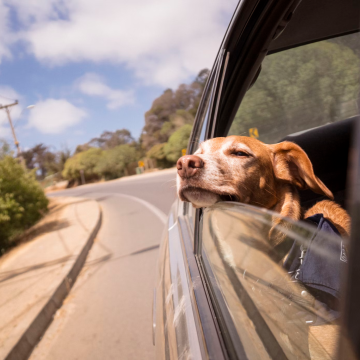Are you about to visit a rather hot location on vacation? A lot of people are – it is the summer after all! But if this is your first vacation in a long while, or you’re someone who finds it hard to adjust to the heat, setting off to a sunny destination is probably making you a bit nervous right now.
We don’t blame you; heat exhaustion and heat stroke are two scary things, and being subjected to relentlessly hot weather can make a person ill in double quick time! It’s why you’ve got to be certain you can take care of yourself in such an extreme climate.
Whether you’re headed off to a remote island or a busy city center in a tropical country, the tips and tricks remain the same. You’ll need to pack a few extra essentials in your suitcase and make sure you’re aware of the symptoms that come with heat related illness. With that in mind, here’s what you’ll need to think about when getting ready to travel.
Pack a Reusable Water Bottle
If you’ve already got a water bottle in your bag, you won’t need to find and buy a new one while you’re there, nor will you ever be out and about without some water in your bag. Pop one in your carry-on, fill it up at the airport after clearing customs so you can safely take it on the plane, and then top it up regularly throughout the day.
You want to always have at least half a bottle on your person at all times, as the sun can really sap the moisture out of you in a matter of half an hour. Sip the water slowly as you walk, don’t guzzle it down, and keep an eye on the way your skin is reacting.
Pop Some Skincare Products in Your Suitcase
Your skin is the first line of defence against the sun. That’s why you need to take extra special care of it when you’re in a hot location. Indeed, there are various dehydrated skin causes, but sun exposure and a long term lack of moisture are the most common. That means they’re the likeliest to happen while you’re away, so it’s best to be prepared.
For example, seeking advanced treatments like peptide injections in Dallas can offer rejuvenation and hydration for sun-damaged skin. These injections can significantly improve the skin’s resilience against environmental stressors, ensuring it remains healthy and vibrant even under harsh conditions.
Pack an exfoliator, pop a cleanser in there, and don’t forget your moisturising cream. Seeing as you’ll be somewhere hot and humid, buy lighter versions of these products than you’re used to. You don’t want to accidentally dry yourself out when you’re trying to take care of your skin!
Only Wear Lightweight Clothing
Lightweight clothing is made of material like linen or cotton, and that’s the best kind of material to wear when you’re somewhere hot. Not only is it light on your body, it tends to be lighter in color as well, and that prevents your outfit from absorbing too much heat as you go.
Lighter colors mean the sun’s rays will be reflected out rather than pulled in, and that’s good news for keeping your internal temperature as low as possible. Try to pack with this principle in mind, and throw out any heavier and/or darker pieces that have made their way into your case!
If You Stop, Get in the Shade
Stopping to chat, or stopping to eat, or stopping to lounge and enjoy the sun, are all activities that need to be done in the shade. If you don’t have a hat to wear to keep your face cool and protected, now’s the time to buy one from a local store as well!
You never want to spend more than 5 minutes in the sun, especially if you haven’t got any suncream on, and you don’t want to make a habit out of standing out in the light and heat. Find the shade and set up camp there instead!
Regularly Dip Pulse Points in Cool Water
Pulse points can be found all over the body, but the strongest are your wrists, the top of your neck under your jaw, and the top of your feet. These are the areas where the blood is closest to the skin, and that means you can directly affect the flow and how it behaves.
In this scenario, you’ll want to use cool water to keep the blood cool as it pumps around your body; you’ll be able to lower your rising internal temp via this method and ensure you don’t overheat or sweat a little too heavily when you’re trying to relax.
Try Not to Drink
Drinking alcoholic beverages while on vacation can dry you out, no matter how good sipping a cocktail around a resort swimming pool might taste! So try to avoid these kinds of drinks as much as you can, and only indulge when it’s much cooler, like later at night (plus the kids will have gone to bed by this point!). Otherwise skip the beers and go for water instead.
Eat Fresh Often
Eating fresh means consuming as many recently picked fruits and vegetables as possible. This is good for you as these ingredients tend to contain more water, and haven’t been left out in the elements for too long. You can then pack dried versions for snacks throughout the day while you’re out; they’ll still be packed with nutrients and can be easily washed down with water.
Order them at breakfast to start the day off right, along with a good glass of orange juice alongside the coffee you like to drink. You’ll need plenty of shots of vitamins while you’re in a hot location, so you’ll want to go a little overboard with a big breakfast filled with fresh foods!
Do ‘Sweaty’ Tasks in the Morning or Evening
Common ‘sweaty’ tasks include running out to buy food and other supplies, exercising and exploring, and anything else that requires you to be on your feet and moving for extended periods. As such, you should save such activities for the early morning or late evening, when the sun hasn’t quite come up or gone down yet.
This means there’ll be more of a breeze to benefit from, and there’s more of a temperate feeling in the air. You can then save your stationary activities for the high heat points of the day, meaning you won’t be wasting energy, water, or drenching yourself in sweat.
Be Aware of Heat Stroke
Heat stroke comes on over time, and because of that, it might be hard to notice as it’s happening. You might feel super thirsty, then a bit sick and tired, and you might just put it down to walking around all day. After all, you’re on vacation, and that means being on your feet exploring!
But seeing as heat stroke sneaks up on you, you’ll have to be proactive about any potential symptoms. Take fatigue, nausea, a temperature, a faster heart rate, and a headache very seriously. It’s better to be safe than sorry, and that means visiting a local hospital and asking a doctor about what you’re feeling.
Staying somewhere hot for a week or two can really dry you out! But as long as a bit of dehydration is your only problem, you’ll still have a good time on vacation. So use tips like these to make sure a bit of thirst is the max of the issues you have to deal with. Plan your time carefully, stay in/create your own shade as much as possible, and keep some water on you at all times.




Leave a Reply